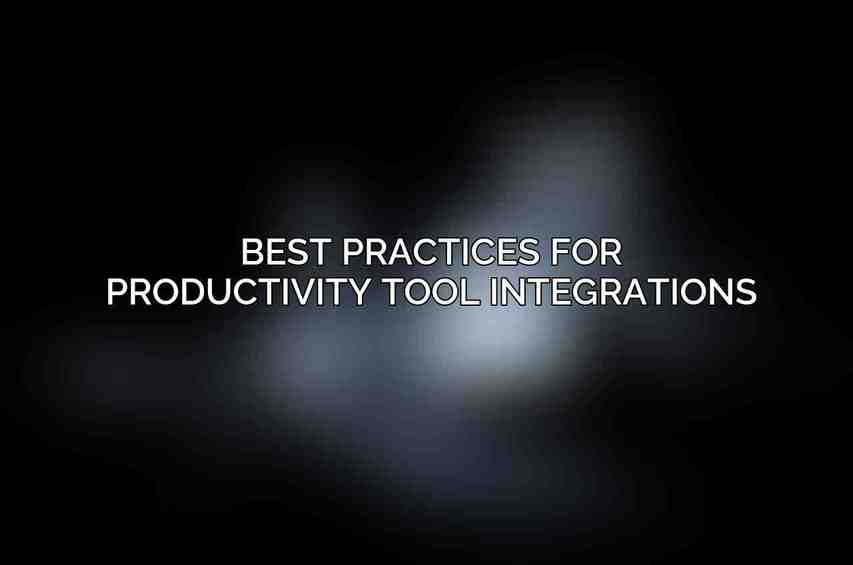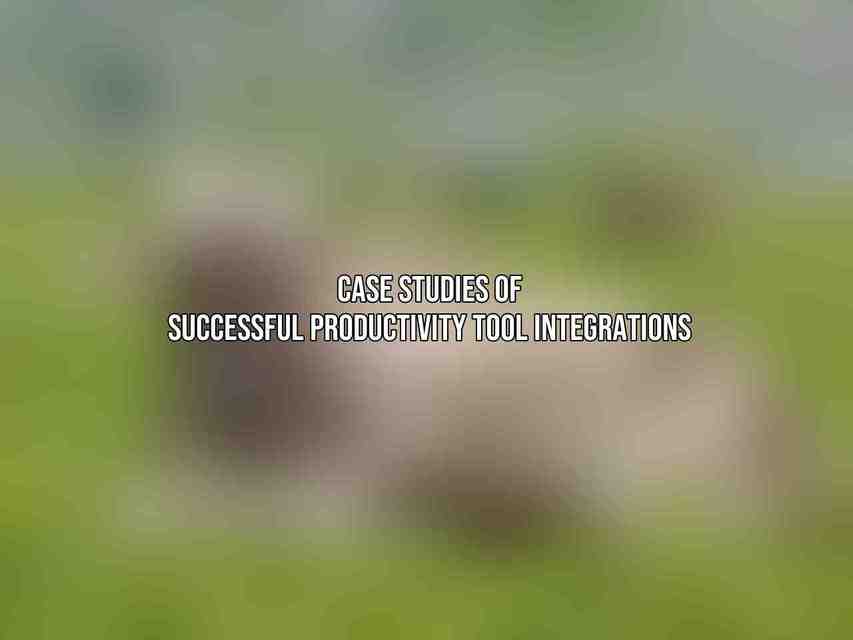The integration of productivity tools has become increasingly essential for businesses aiming to streamline operations and enhance collaboration among teams. productivity tool integrations refer to the seamless connectivity and interaction between different software applications to create a more efficient and productive workflow for organizations across various industries.
Definition of productivity tool integrations:Productivity tool integrations involve linking different software applications to enable them to work together harmoniously, allowing users to transfer data, automate tasks, and improve overall efficiency within their workflow.
Benefits of productivity tool integrations:1. Streamlined workflow: Integrating productivity tools eliminates the need for manual data transfer between systems, reducing errors and redundancies in tasks.2. Enhanced collaboration: By connecting tools that facilitate team communication and project management, integrations promote better collaboration and information sharing.3. Time savings: Automation features in integrated tools help save time by reducing repetitive manual processes and increasing productivity.
Types of Productivity Tools
A. Communication Tools
1. Slack
Slack is a popular communication tool that offers features such as instant messaging, file sharing, video conferencing, and integration with various other business tools for a seamless workflow.
Microsoft Teams
Microsoft Teams provides video conferencing, screen sharing, document collaboration, and integration with Microsoft Office applications, making it a comprehensive platform for team communication and collaboration.
B. Project Management Tools
1. Asana
Asana specializes in task management, project planning, and file sharing, enabling teams to organize and track their work efficiently with intuitive collaboration features.
Trello
Trello’s Kanban-style task management and collaboration boards make it a versatile tool for visualizing projects, assigning tasks, and monitoring progress in real-time.
C. Collaboration Tools
1. Google Drive
Google Drive offers document storage, collaboration, and file sharing capabilities, making it a popular choice for teams to create, store, and edit documents in a shared workspace.
Dropbox
Dropbox provides file storage, collaboration features, and seamless file sharing, enhancing team productivity by centralizing document management and accessibility.
D. Automation Tools
1. Zapier
Zapier automates tasks by connecting different apps and services, allowing users to create workflows that trigger actions in one app based on events in another.
IFTTT
IFTTT (If This Then That) enables users to automate tasks by creating conditional statements, known as applets, to trigger actions across multiple platforms based on predefined triggers. Learn more about 2024’s Top Time Tracking Apps for Enhanced Productivity
E. Data Visualization Tools
1. Tableau
Tableau offers powerful data visualization capabilities and interactive dashboards, empowering organizations to uncover insights, make data-driven decisions, and communicate information effectively. Check this blog on Leveraging AI for Peak Productivity: A 2024 Guide
Power BI
Power BI is a business analytics tool that enables users to visualize data, create reports, and share insights, helping businesses stay informed and drive strategic decisions based on real-time information.
Best Practices for Productivity Tool Integrations

Identify the tools that best meet your needs: Before integration, assess your workflow requirements and select tools that align with your business objectives and processes.Consider the compatibility of the tools: Ensure that the tools you intend to integrate are compatible with each other to avoid technical issues and data inconsistencies.Set up the integrations carefully: Follow guidelines provided by the tools’ documentation to set up integrations correctly and optimize their functionality.Train your team on the integrations: Provide training sessions to familiarize users with the integrated tools and encourage adoption for maximum efficiency.Monitor the integrations to ensure they are working properly: Regularly check the integrations for errors, performance issues, and updates to maintain a seamless workflow.
Case Studies of Successful Productivity Tool Integrations

A. Example 1: Company X integrates Slack with Asana
By integrating Slack with Asana, Company X improved communication and task management within their teams, enabling real-time updates on project tasks and deadlines, leading to increased productivity and collaboration.
B. Example 2: Company Y integrates Google Drive with Dropbox
Company Y integrated Google Drive with Dropbox to enhance file collaboration and storage capabilities, allowing team members to seamlessly share, edit, and access documents in a centralized location, boosting efficiency and information accessibility.
C. Example 3: Company Z integrates Zapier with Salesforce
By integrating Zapier with Salesforce, Company Z automated lead generation processes, enabling timely follow-ups, personalized communications, and efficient lead tracking, resulting in improved sales productivity and customer engagement.
seamless productivity tool integrations play a critical role in optimizing workflow efficiency, promoting collaboration, and increasing productivity within organizations. By implementing best practices, such as selecting compatible tools, careful setup, training, and monitoring, businesses can harness the full potential of integrated tools to drive success in their operations. Looking ahead, the future of productivity tool integrations is poised for continuous innovation, with advancements in automation, AI, and data analytics reshaping how businesses operate and achieve their goals in the digital era. By embracing the integration of diverse productivity tools, organizations can stay ahead of the curve and remain competitive in an ever-evolving business world.
Frequently Asked Questions
What are some common productivity tools that can be integrated for efficient workflow?
Some common productivity tools that can be integrated include project management tools like Trello, communication tools like Slack, file sharing tools like Google Drive, and time tracking tools like Harvest.
How can seamless integrations between different tools improve workflow efficiency?
Seamless integrations between different tools can improve workflow efficiency by allowing for smoother communication, easier data sharing, and streamlined processes across different tasks and platforms.
Are there any challenges or drawbacks to using integrated productivity tools?
Some challenges of using integrated productivity tools include potential compatibility issues, possible security concerns with data sharing, and the learning curve of mastering multiple tools within a workflow.
What are some tips for successfully implementing and utilizing integrated productivity tools?
Some tips for successfully implementing and utilizing integrated productivity tools include conducting thorough research on tool compatibilities, providing adequate training for team members, and regularly evaluating and optimizing tool usage for workflow improvement.
How can businesses benefit from utilizing seamless product tool integrations?
Businesses can benefit from utilizing seamless product tool integrations by increasing team collaboration, reducing manual tasks, boosting productivity levels, and enabling faster decision-making processes within the organization.

